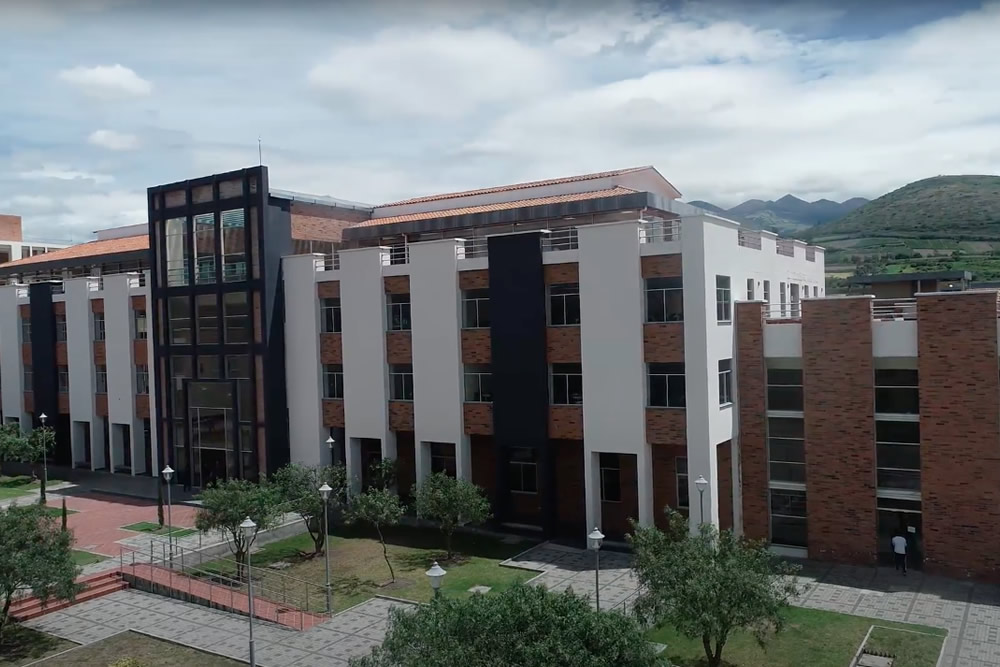Adsorption of glyphosate in water by Fe3O4@TiO2 nanocomposite / Edison Patricio Paredes Carranza ; tutor Sarah Elisa Briceño Araujo
Tipo de material: TextoIdioma: Inglés Idioma del resumen: Español Fecha de copyright: Urcuquí, 2021Descripción: 104 hojas : ilustraciones (algunas a color) ; 30 cm + 1 CD-ROMTema(s): Recursos en línea: Nota de disertación: Trabajo de integración curricular (Ingeniero en Nanotecnología). Universidad de Investigación de Tecnología Experimental Yachay. Urcuquí, 2021 Resumen: Natural resources are the main support of development and advancement of the populations in the world. The treatment of polluted waters with non-destructive, efficient and environmentally friendly methods are one of the most relevant topics in research studies. Glyphosate is an organophosphate pesticide widely used in the agricultural industry to control plant species. Its common use has led to the unwanted release of glyphosate in wastewater, rivers, and other sources of aqueous media. The presence of glyphosate in wastewater and water sources affect human and ecosystem health due to its toxicity. In this work, we design a magnetic nanocomposite based on TiO2 with magnetite nanoparticles Fe3O4 to investigate the adsorption process of commercial glyphosate in water. The synthesis of magnetic nanocomposite are easily attracted by an external magnetic field, demonstrating the easily recover after the adsorption process. The nanomaterials were characterized using fourier-transform infrared spectroscopy (FTIR), XRD, EDS color mapping, and SEM. The FTIR spectra demonstrate the presence of the characteristic peaks of TiO2 and Fe3O4 NPs. XRD patterns confirm the structure of Fe3O4 NPs and TiO2 with a higher percentage of the anatase crystalline phase than the rutile one. SEM and EDS elemental mapping micrographs confirm the presence of both materials and reveal the aggregation of iron nanoparticles. The average particle size of the nanocomposite was 100 + 20 nm. Our results demonstrate that the maximum removal rate (R) reached was 26%. The adsorption/desorption mechanism investigated in this work argues that the commercial glyphosate with the presence of magnetite is related to the formation of a glyphosate/metal complex inhibiting the performance of the nanocomposite as absorbent. es
TextoIdioma: Inglés Idioma del resumen: Español Fecha de copyright: Urcuquí, 2021Descripción: 104 hojas : ilustraciones (algunas a color) ; 30 cm + 1 CD-ROMTema(s): Recursos en línea: Nota de disertación: Trabajo de integración curricular (Ingeniero en Nanotecnología). Universidad de Investigación de Tecnología Experimental Yachay. Urcuquí, 2021 Resumen: Natural resources are the main support of development and advancement of the populations in the world. The treatment of polluted waters with non-destructive, efficient and environmentally friendly methods are one of the most relevant topics in research studies. Glyphosate is an organophosphate pesticide widely used in the agricultural industry to control plant species. Its common use has led to the unwanted release of glyphosate in wastewater, rivers, and other sources of aqueous media. The presence of glyphosate in wastewater and water sources affect human and ecosystem health due to its toxicity. In this work, we design a magnetic nanocomposite based on TiO2 with magnetite nanoparticles Fe3O4 to investigate the adsorption process of commercial glyphosate in water. The synthesis of magnetic nanocomposite are easily attracted by an external magnetic field, demonstrating the easily recover after the adsorption process. The nanomaterials were characterized using fourier-transform infrared spectroscopy (FTIR), XRD, EDS color mapping, and SEM. The FTIR spectra demonstrate the presence of the characteristic peaks of TiO2 and Fe3O4 NPs. XRD patterns confirm the structure of Fe3O4 NPs and TiO2 with a higher percentage of the anatase crystalline phase than the rutile one. SEM and EDS elemental mapping micrographs confirm the presence of both materials and reveal the aggregation of iron nanoparticles. The average particle size of the nanocomposite was 100 + 20 nm. Our results demonstrate that the maximum removal rate (R) reached was 26%. The adsorption/desorption mechanism investigated in this work argues that the commercial glyphosate with the presence of magnetite is related to the formation of a glyphosate/metal complex inhibiting the performance of the nanocomposite as absorbent. es
| Tipo de ítem | Biblioteca actual | Signatura | Copia número | Estado | Fecha de vencimiento | Código de barras | Reserva de ítems | |
|---|---|---|---|---|---|---|---|---|
 Tesis
Tesis
|
Biblioteca Yachay Tech | ECFN0057 (Navegar estantería(Abre debajo)) | 1 | No para préstamo | T000366 |
Trabajo de integración curricular (Ingeniero en Nanotecnología). Universidad de Investigación de Tecnología Experimental Yachay. Urcuquí, 2021
Incluye referencias bibliográficas (páginas 73-84)
Trabajo de integración curricular con acceso abierto
Texto (Hypertexto links)
Natural resources are the main support of development and advancement of the populations in the world. The treatment of polluted waters with non-destructive, efficient and environmentally friendly methods are one of the most relevant topics in research studies. Glyphosate is an organophosphate pesticide widely used in the agricultural industry to control plant species. Its common use has led to the unwanted release of glyphosate in wastewater, rivers, and other sources of aqueous media. The presence of glyphosate in wastewater and water sources affect human and ecosystem health due to its toxicity. In this work, we design a magnetic nanocomposite based on TiO2 with magnetite nanoparticles Fe3O4 to investigate the adsorption process of commercial glyphosate in water. The synthesis of magnetic nanocomposite are easily attracted by an external magnetic field, demonstrating the easily recover after the adsorption process. The nanomaterials were characterized using fourier-transform infrared spectroscopy (FTIR), XRD, EDS color mapping, and SEM. The FTIR spectra demonstrate the presence of the characteristic peaks of TiO2 and Fe3O4 NPs. XRD patterns confirm the structure of Fe3O4 NPs and TiO2 with a higher percentage of the anatase crystalline phase than the rutile one. SEM and EDS elemental mapping micrographs confirm the presence of both materials and reveal the aggregation of iron nanoparticles. The average particle size of the nanocomposite was 100 + 20 nm. Our results demonstrate that the maximum removal rate (R) reached was 26%. The adsorption/desorption mechanism investigated in this work argues that the commercial glyphosate with the presence of magnetite is related to the formation of a glyphosate/metal complex inhibiting the performance of the nanocomposite as absorbent. es
Textos en inglés con resúmenes en español e inglés
No hay comentarios en este titulo.



